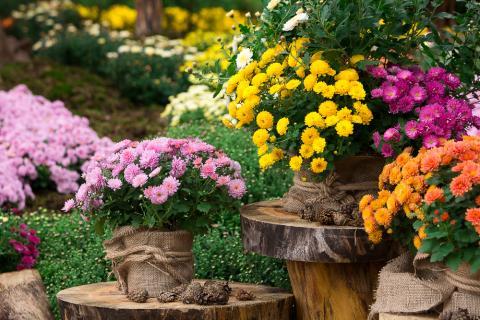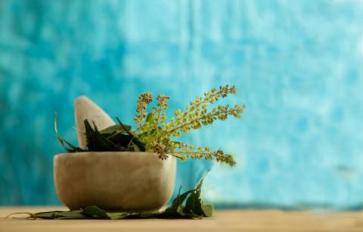
Fall comes quickly, and within a few weeks cooler temperatures and less sunshine will be status quo. The best way to kickstart a cozy autumn is in the garden, and planting a variety of colorful fall annuals and perennials is key. This article includes a round-up of ten fall-inspired plants, several of which are also edible.
1. Chrysanthemum
The colorful chrysanthemum, an herbaceous perennial that is seen at garden nurseries and front yards as soon as summer winds down, is a classic plant for fall. Coming in colors that range from sunshine yellow to pumpkin orange to pomegranate red, mums, as they are affectionately called, are offered in more than 100 varieties in the United States alone. Within this, they can vary in shape—from anemones to pompoms to thistles and spoons.
Chrysanthemum petals are edible (which, if you live in a deer-heavy area, may be one reason your blooms disappear!). However, if you plan on using them in recipes, look for a variety that offers a mellower taste; many varieties are bitter, tangy, or peppery. Some nurseries may offer Chrysanthemum morifolium, a mum variety that is commonly grown for chrysanthemum tea.
2. Ornamental Kale
While we might recommend growing lacinato or green kale in your fall garden (because why not?), ornamental or flowering kale and cabbage add a twist against the typical display of bright flowers. This hardy plant maintains its bright purple and green colors through winter. That said, wait until nighttime temperatures remain below 50°F for this plant to flourish.
3. Ornamental Pepper
Saying goodbye to your summer padrons, jalapenos, and habaneros is easier when ornamental peppers are grown. These small plants produce dozens of tiny peppers ranging in color from red and orange to yellow and purple. Although not edible, ornamental peppers can be grown as perennials in certain hardiness zones.
4. Black-Eyed Susans
Most people think of these as a summer flower, but Black-Eyed Susans shine their cheery golden flowers through October. As members of the sunflower family, these plants do well in both the garden and the container and with fairly little maintenance will return year after year.
5. Amaranthus
With their burgundy-hued seeds and their dramatic posture, Amaranthus looks more like an exotic tropical than a humble grain, but this plant is actually the source of amaranth. Also known as love-lies-bleeding, its seeds are high in iron and calcium and can be made into porridge, bars, or even pancakes.
6. Pansies
Pansies are a staple spring flower, but many varieties showcase autumn shades. Try planting ruffled oranges with smooth-leafed blues, or mix deep purples with canary yellows for a Halloween-inspired front yard.
7. Witch Hazel
Many people may be more familiar with witch hazel, the popular all-natural toner, more-so than witch hazel, the tree. That’s a shame, because witch hazel is a stunning tree with spindly yellow “hairs” along the bark. Best of all, this tree flowers in the winter, providing color in what can be a more monochromatic time of the year.
8. Sedum
Sedum is a do-it-all plant: drought-resistant, heat-tolerant, pollinator-friendly, and easy to grow. These succulents, commonly called stonecrop, can be low-growing ground covers or upright plants that offer bright purple flowers.
9. Rosemary
Herbs may be edible, but that doesn’t mean they’re unsuitable for a fall garden, especially when their colors contrast well against fall hues. Rosemary is particularly hardy, and in milder climates can thrive year-round. Plus, its strong scent can detract deer and other garden pests.
10. Celosia
This fringe-flowered plant has blooms that are reminiscent of flames; luckily, growing it is easier than it seems. These whimsical plants come in both the more traditional “flame” variety and the less common “coral” variety, and are related to another plant on this list—Amaranthus. Celosia require full sun and drier conditions. As such, they are better suited to early fall.








